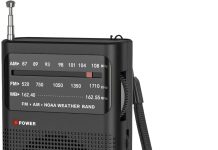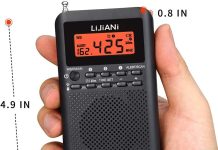In today’s article, we explore the essential special features required for disability access. From ramps to braille signage, we will uncover the key elements necessary to ensure inclusivity and accessibility for individuals with disabilities. Whether you are a business owner seeking to make your establishment accessible or a homeowner looking to enhance your property, you’ve come to the right place. Join us as we delve into the world of disability access and discover the important features that can make a significant difference in someone’s life.
Review contents
Accessible Entrance
When it comes to disability access, having an accessible entrance is essential in ensuring equal access for all individuals. There are a few key features that we should consider when designing an accessible entrance.
Ramps
Ramps are an important feature for individuals who use wheelchairs or have difficulty navigating stairs. They provide a smooth and gradual incline that allows for easy access to buildings. Ramps should be wide enough to accommodate a wheelchair and should have handrails on both sides for added safety and support. The slope of the ramp should not be too steep, as this could make it difficult for wheelchair users to navigate.
Automatic Door Openers
Automatic door openers are a convenient feature that can greatly improve accessibility for individuals with mobility impairments. These devices allow doors to be opened and closed automatically, eliminating the need for manual effort. Automatic door openers are particularly beneficial for individuals who use wheelchairs or other mobility aids, as they enable seamless entry and exit without the need to rely on others for assistance.
Parking
Accessible parking spaces are an important consideration for disability access, as they ensure that individuals with disabilities have convenient and designated parking spots. These spaces are generally located close to the entrance of the building, making it easier for individuals with mobility impairments to access the building.
Accessible Parking Spaces
Accessible parking spaces should be clearly marked with a sign displaying the International Symbol of Accessibility. These spaces should be wide enough to accommodate a wheelchair-accessible vehicle and should provide enough space for individuals with mobility aids to transfer in and out of their vehicles comfortably. Accessible parking spaces should be located close to the entrance and should have a smooth and level surface to ensure ease of access.
Wide Parking Spaces
In addition to accessible parking spaces, having wider parking spaces can also greatly improve accessibility for individuals with disabilities. Wide parking spaces allow for easier maneuverability for individuals who use wheelchairs or other mobility aids, as well as for those who may have difficulty getting in and out of vehicles. These wider spaces also provide more room for individuals with mobility aids to safely open their car doors and transfer in and out of their vehicles.
Entrance and Doorways
Wide, accessible doorways are crucial to providing an inclusive and accessible environment for individuals with disabilities. A narrow doorway can create barriers for those using wheelchairs or mobility aids, limiting their ability to enter a building independently.
Wide Doorways
Wide doorways, typically around 36 inches wide, accommodate individuals using wheelchairs or mobility aids. These spacious doorways allow for easy entry and exit without the risk of getting stuck or feeling claustrophobic. Along with wider doorways, it is important to ensure there are no obstructions in the path leading to the entrance, such as furniture or decorative elements, that may impede accessibility.
Lever-Style Door Handles
Door handles play an important role in accessibility. Lever-style door handles, as opposed to traditional round doorknobs, are easier to use for individuals with limited dexterity or mobility. Lever handles can be operated with a push or pull motion, making it simpler for those with disabilities to open doors independently. By replacing traditional doorknobs with lever-style handles, we can significantly improve ease of access and inclusion.
Clear Pathways
Clear pathways leading to the entrance are vital for individuals with disabilities, particularly those using wheelchairs or mobility aids. Clear pathways eliminate obstacles and obstructions that could impede accessibility. It is important to ensure that sidewalks, walkways, and ramps leading to the entrance are free from debris, snow, or ice, which could pose a hazard to individuals with limited mobility. Regular maintenance and adherence to accessibility regulations can help create safe and clear pathways for everyone.
Elevators and Lifts
Elevators and lifts are essential features in buildings with multiple floors, as they provide vertical access to individuals with mobility impairments who cannot use stairs.
Accessible Elevators
Accessible elevators play a crucial role in ensuring equal access for all individuals, regardless of mobility. Elevators should be spacious enough to accommodate a wheelchair or mobility aid comfortably. They should also have clear and visible buttons at a suitable height for individuals with disabilities to reach easily. Elevators should be well-maintained, regularly inspected, and equipped with emergency buttons for additional safety.
Braille and Raised Characters on Control Panels
In order to make elevators more accessible for individuals with visual impairments, it is important to incorporate braille and raised characters on control panels. These tactile features allow individuals with visual impairments to easily locate and select the desired floor. Clear signage and tactile cues contribute to a fully inclusive environment that acknowledges and accommodates individuals with varying abilities.
Staircases and Ramps
Staircases and ramps are areas that require careful consideration to ensure accessibility for individuals with disabilities. From handrails to clear signage, specific features can greatly improve the usability and safety of these elements.
Handrails
Handrails are critical components of staircases and ramps, providing support and stability for individuals with mobility impairments. Sturdy handrails should be installed on both sides of staircases and ramps, allowing individuals to maintain balance and navigate safely. The height and grip of the handrails should comply with accessibility standards, ensuring a secure hold for everyone. Regular maintenance and inspections are necessary to ensure handrails are secure and functioning properly.
Clear Signage
Clear signage is important for individuals with disabilities who may be relying on visual cues to navigate staircases and ramps. Signage should be placed at strategic locations, indicating the direction and presence of stairs or ramps. Clear arrows, symbols, and contrasting colors can assist individuals with visual impairments or cognitive disabilities in identifying and utilizing the correct pathway.
Non-Slip Surfaces
To ensure the safety of individuals with disabilities, staircases and ramps should have non-slip surfaces. Slip-resistant materials or textures, such as non-slip paint or rubber treads, should be applied to steps and ramps to prevent accidents caused by slippery conditions. Regular maintenance, including cleaning and repair, is essential to ensure that these surfaces remain slip-resistant over time.
Restrooms
Accessible restrooms are a fundamental aspect of inclusive design, providing necessary facilities for individuals with disabilities.
Accessible Toilets
Accessibly designed toilets feature specific elements that promote independence and comfort for individuals with mobility impairments. These toilets are equipped with grab bars for support and stability, and they have adequate space for individuals using wheelchairs or mobility aids to maneuver effectively. The height of the toilet seat is also crucial, as it should be at a comfortable level for transfers and ensure safe use for all individuals.
Grab Bars
Grab bars are essential features in accessible restrooms, serving as support structures for individuals with disabilities. These bars are typically installed near the toilet, shower, or bathtub to provide stability and assist in transfers. Grab bars should be securely mounted and capable of bearing weight, ensuring the safety and independence of individuals with mobility impairments.
Clear Floor Space
Clear floor space in accessible restrooms is necessary to accommodate individuals who use wheelchairs or mobility aids. The clear space allows for easy maneuverability and provides individuals with the space they need to transfer onto the toilet or use the sink. The dimensions of this area should comply with accessibility guidelines, ensuring that individuals have enough room to navigate safely and comfortably.
Lighting
Adequate lighting is vital in creating an inclusive and safe environment for individuals with disabilities. Proper lighting enhances visibility and reduces the risk of accidents or falls.
Ample Lighting
Bright and evenly distributed lighting is key to ensuring accessibility in all areas of a building. Ample lighting helps individuals with visual impairments to navigate and access different spaces with confidence. It is crucial to minimize shadows and dark spots, as they can be disorienting and pose a risk for individuals with low vision. Well-lit entrance areas, hallways, staircases, and restroom facilities contribute to an inclusive environment for everyone.
Contrasting Colors for Signage and Pathways
Using contrasting colors for signage and pathways can significantly improve accessibility for individuals with visual impairments or cognitive disabilities. High contrast between text and background allows individuals with low vision to read signs more easily, promoting independence and reducing confusion. Similarly, clear color differentiation between pathways, stairs, and ramps helps individuals with cognitive disabilities to navigate and identify the correct routes.
Assistive Technology
Assistive technology plays a pivotal role in enhancing accessibility and ensuring equal opportunities for individuals with disabilities. These technologies enable individuals to accomplish tasks and interact with their surroundings more independently.
Text-to-Speech Programs
Text-to-speech programs assist individuals with visual impairments or reading disabilities by converting written text into spoken words. These programs can be integrated into computers, mobile devices, and other electronic systems, allowing individuals to access information, read documents, and navigate digital interfaces more easily. Text-to-speech programs empower individuals with disabilities by providing them with equal access to written content.
Screen Readers
Screen readers are software programs that verbally convey the content displayed on a computer screen or mobile device. These programs are essential for individuals who are blind or have low vision, enabling them to access and navigate digital content independently. Screen readers use voice synthesis or braille displays to relay information, allowing individuals to interact with technology in a way that suits their needs and abilities.
Gesture-Based Controls
Gesture-based controls are a form of assistive technology that enables individuals with mobility impairments to interact with electronic devices using gestures or body movements. These controls utilize sensors or cameras to detect movements and translate them into commands. Gesture-based controls are particularly beneficial for individuals with limited dexterity or mobility, allowing them to operate devices such as smartphones, tablets, or gaming consoles with greater ease and independence.
Visual and Auditory Alerts
Visual and auditory alerts are crucial features that enhance safety and accessibility for individuals with hearing impairments or visual impairments.
Visual Fire Alarms
Visual fire alarms provide essential notifications to individuals with hearing impairments during emergencies. These alarms utilize bright strobe lights or flashing indicators to alert individuals to the presence of a fire or other dangerous situations. Visual fire alarms should be installed in all areas of a building to ensure individuals with hearing impairments can be promptly alerted and safely evacuate.
Auditory Announcements
Auditory announcements are valuable for individuals with visual impairments, as they allow them to receive important information through sound cues. These announcements can be incorporated into public transportation systems, train stations, airports, or any other public spaces. Auditory announcements help individuals with visual impairments navigate and access vital information independently, enhancing their overall experience and safety.
Signage and Wayfinding
Clear and inclusive signage is essential in guiding individuals with disabilities through a building or public space. Signage should be visible, informative, and easy to interpret for all individuals.
Large and Clear Fonts
Signage should utilize large and clear fonts to enhance legibility for individuals with visual impairments or reading disabilities. Large fonts make signs easier to read from a distance, while clear fonts reduce ambiguity and confusion. The selection of appropriate font size, typeface, and color contrast should be based on accessibility guidelines to ensure optimal readability for all individuals.
Visible Symbols
Incorporating visible symbols into signage is beneficial for individuals with cognitive disabilities or those who have difficulty understanding written information. Symbols can be used to convey messages, indicate directions, or provide instructions in a way that is universally understood. Combining symbols with text can create a more inclusive and accessible signage system.
Braille Signage
Including braille signage is essential for individuals who are blind or have low vision. Braille allows these individuals to access information independently through tactile reading. Braille signage can be incorporated into various areas, including restrooms, elevators, and room numbers, to ensure individuals with visual impairments can navigate and utilize the facility effectively.
By implementing these special features for disability access, we can create an inclusive and welcoming environment that caters to the needs of individuals with disabilities. Designing spaces with accessibility in mind not only ensures compliance with accessibility standards but also fosters a sense of dignity, independence, and equal participation for all individuals. Let’s work together to create spaces that are accessible to everyone, leaving no one behind.



























